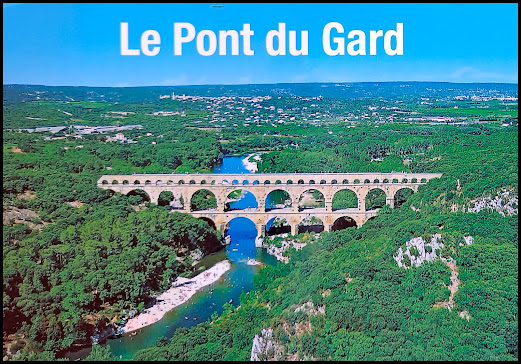Postcard sent by me during a trip to France.
Sent- 08 of July of 2019.
INSCRIPTION/INSCRITO: 1985
The Pont du Gard was built shortly before the Christian era to allow the aqueduct of Nîmes (which is almost 50 km long) to cross the Gard river. The Roman architects and hydraulic engineers who designed this bridge, which stands almost 50 m high and is on three levels – the longest measuring 275 m – created a technical as well as an artistic masterpiece.
Located in the Occitanie region, the Pont du Gard is the major element of a 50.02 km aqueduct built in the middle of the 1st century to supply the city of Nîmes, the ancient Roman colony of Nemausus, from the Eure source located near Uzès. A three-storey aqueduct bridge rising to nearly 48.77 m, it enabled the water conduit to cross the Gardon River.
This triple bridge, whose longest floor, at the very top of the edifice, measured 360 m, is a feat and a masterpiece of Roman architectural technique, but also a work of art whose presence transfigures the landscape. Set in a natural site that enhances its imposing appearance and its lines of force, the Pont du Gard rests on a rocky base, notched by the river spanned by its major arch. The gentle and symmetrical tapering of the arches, the span of the lower arches and the regularity of the upper gallery give it an extraordinarily airy appearance for a work of such magnitude.
The Pont du Gard is an outstanding example of bridges built in ancient times. It achieves a triple performance with its three levels of arches of unequal dimensions and is characterized by the use, for the construction of the arches of the lower levels, of juxtaposed rollers composed of voussoirs bearing engraved positioning marks. In the series of Roman aqueducts, this exceptional edifice is the result of an extensive adaptation to the river regime of the Gardon whose floods are sudden and devastating. The lips installed in front of the piers are designed to resist high water, and the opening of the principal lower arch (24.52 m instead of 21.87 m for the arches of the extremes) facilitates the flow of water.
Built, on the first two levels, of large stone blocks and, at the upper level, of small stone rubble which hold the abutting flagstones of the canal, the Pont du Gard is one of the most revealing monuments as to the construction processes of the early Imperial era. On the dressing of the stone can still be seen the marks of the quarrymen’s and stonecutters’ tools, and sometimes the coding of the stones, with figures and letters, showing their position in the assembly schema. The precision in execution meets to perfection a challenging design, and the Pont du Gard has, ever since the 16th century, been considered as one of the major accomplishments of the Roman civilization.



No hay comentarios:
Publicar un comentario